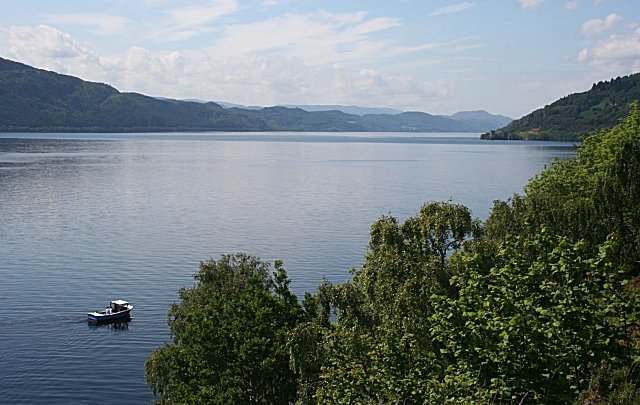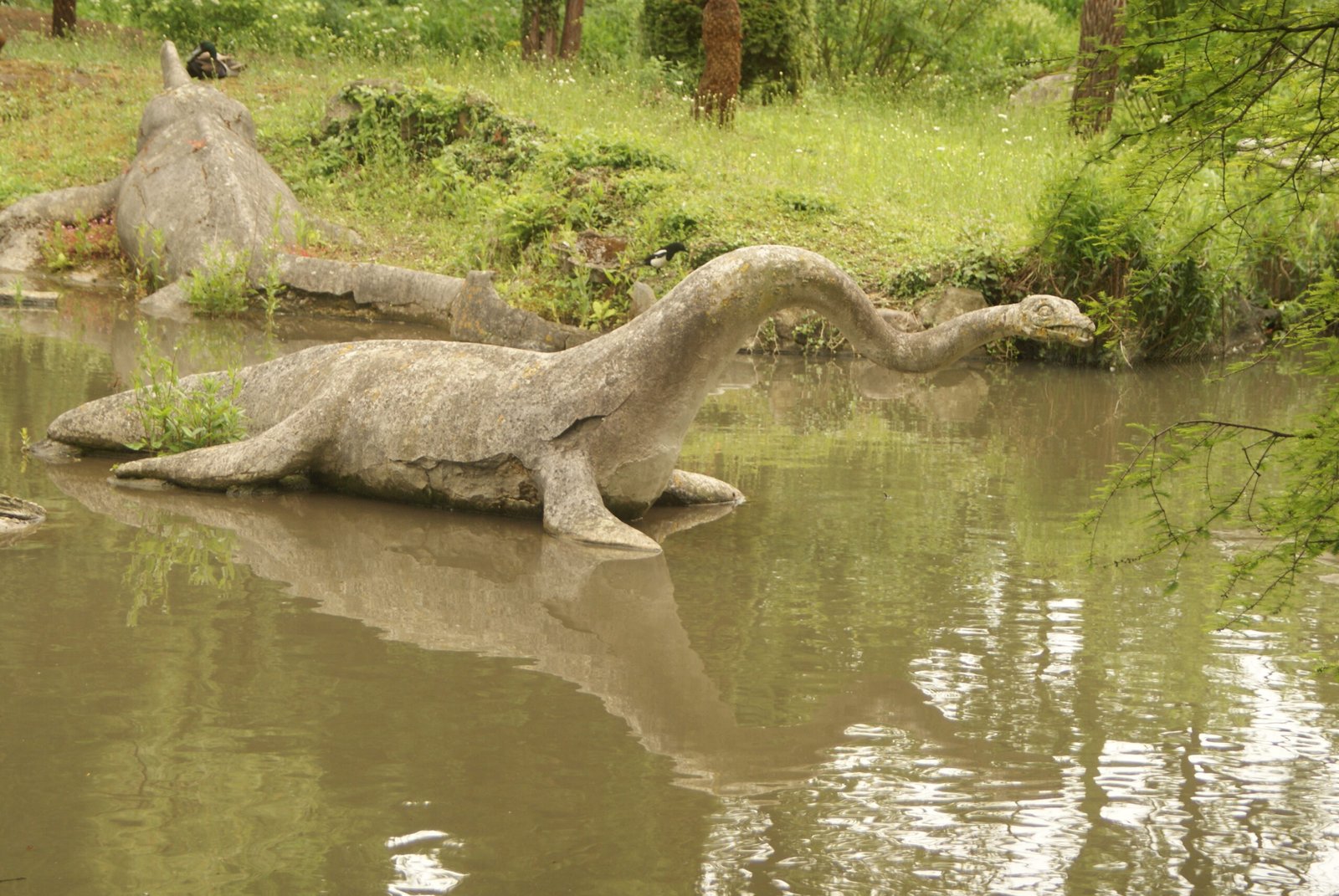A cold mist clings to the surface of Loch Ness as dawn breaks, painting the water in shades of silver and blue. Somewhere beneath those mysterious ripples, legend insists, a creature has lurked for centuries—a beast as elusive as it is famous. The Loch Ness Monster, or “Nessie” as she’s affectionately called, has sparked imaginations, fueled debates, and drawn thousands to the Scottish Highlands. Is Nessie a hidden giant from another era or just a trick of the light? Today, we plunge into the heart of the legend, peeling back layers of myth and marvel to discover what’s real, what’s rumor, and why the world remains so utterly captivated by the story of Loch Ness.
The Birth of a Legend

Long before photographs and sonar scans, the tale of a mysterious creature in Loch Ness began with whispers and campfire stories. The earliest written account comes from the 6th century, when Irish monk Saint Columba reportedly encountered a “water beast” in the River Ness. Over the centuries, local folklore grew, describing something large and shadowy gliding silently beneath the waves. These early stories blended fear and fascination, turning the monster into a symbol of the unknown—a living mystery that seemed almost magical. The legend took root in Scottish culture, passed down through generations, never quite fading away.
The 1933 Sightings Boom

Everything changed in 1933 when a new road was built along the loch, making it easier for people to see the water’s surface. That same year, a couple driving by claimed to spot “an enormous animal” crossing the road and splashing into the loch. Their account set off a media frenzy. Headlines screamed of a modern-day dinosaur. Tourists and monster hunters flocked to Loch Ness, hoping to catch a glimpse of the beast. The story snowballed, and soon, sightings were reported almost weekly, each more dramatic than the last. Nessie fever had officially begun.
The Surge of Photographic “Evidence”

Perhaps the most iconic piece of Nessie lore is the famous “Surgeon’s Photograph” from 1934. The blurry black-and-white image, showing a long neck and small head, became the definitive evidence for believers. For decades, it was hailed as proof that Nessie was real. However, in the 1990s, revelations surfaced that the photo was a clever hoax involving a toy submarine and some creative staging. Despite its debunking, the image lingers in the public’s imagination, demonstrating how a single photo can fuel an entire legend—even when science steps in to reveal the truth.
Eyewitness Accounts: Memory or Myth?

Eyewitness reports have always been the backbone of the Nessie story. Some describe a serpent-like creature undulating across the water, while others speak of humps and splashes. But memory can play tricks, especially when expectation meets the unknown. Psychologists point out that our brains are wired to see patterns and shapes, especially in uncertain conditions like fog or choppy water. The power of suggestion is strong; a shadow or floating log can morph into a monster under the right circumstances. Still, the conviction in many witnesses’ voices is hard to ignore, keeping the debate alive.
Loch Ness: A Perfect Stage for Mystery

Loch Ness itself is a character in this story—deep, dark, and mysterious. It stretches over 20 miles and is more than 750 feet deep in places, making it the largest body of freshwater by volume in the UK. Its peaty waters are so murky that visibility is limited to just a few feet below the surface. This natural obscurity is the perfect backdrop for legends. Anything, it seems, could hide in those inky depths, and the mind fills in the blanks with monsters, especially when the landscape feels so ancient and untouched.
Scientific Expeditions and Sonar Searches
Since the mid-20th century, scientists and adventurers have used everything from underwater cameras to state-of-the-art sonar to search for Nessie. In 1972, the Loch Ness Investigation Bureau conducted one of the largest operations, using sonar beams to scan the loch’s depths. While they picked up some unexplained “contacts,” nothing conclusive emerged. More recently, in 2018, a global team conducted a DNA survey of Loch Ness, hoping to identify every living organism in the water. The study found plenty of life—fish, eels, and more—but no evidence of a prehistoric monster. Still, each search brings new discoveries and keeps the spirit of inquiry alive.
The Power of Suggestion and Pareidolia

Our brains are remarkably good at seeing what we want to see. The phenomenon known as pareidolia causes us to perceive familiar shapes—like faces or animals—in random patterns. Ripples, driftwood, and even swimming deer have been mistaken for Nessie over the years. When people visit Loch Ness, primed by decades of stories and photos, their minds are ready to turn every splash or shape into something extraordinary. It’s like looking for shapes in clouds: the monster becomes a canvas for our hopes, fears, and imaginations.
Unusual Creatures: Could Nessie Be Real?

Some researchers have speculated that Nessie could be a species unknown to science—a giant eel, a surviving plesiosaur, or even an undiscovered mammal. Giant eels do live in the loch, and sometimes, they can grow surprisingly large. Others have suggested that ancient fish like sturgeon could explain some sightings, as they have long, armored bodies and can appear prehistoric. However, there’s no solid evidence for a large, mysterious creature unique to Loch Ness, despite decades of searching and scientific scrutiny.
The Plesiosaur Theory: Science Meets Imagination

One of the most enduring ideas is that Nessie is a surviving plesiosaur, a marine reptile from the age of dinosaurs. This theory took off in the 1930s after the “Surgeon’s Photograph” appeared to show a long-necked creature. While the idea captures the imagination, it doesn’t hold up scientifically. Plesiosaurs were marine animals, not freshwater dwellers, and they went extinct around 66 million years ago. The loch was also covered in ice until around 10,000 years ago, long after the last plesiosaurs vanished. Still, the image of a living dinosaur lurking in Scotland is hard to resist.
Hoaxes, Pranks, and Publicity Stunts

Not all Nessie stories are innocent mistakes. Over the years, some have deliberately faked evidence for fame, money, or a good laugh. In the 1970s, a group of pranksters staged a “monster” sighting using a fake head and neck mounted on a float. In other cases, locals admitted to crafting footprints or other signs to stir up excitement. While these hoaxes have sometimes damaged the monster’s credibility, they’ve also added a layer of playful mischief to the legend. The line between fun and fraud can be thin, but the enduring interest in Nessie shows just how strong the appeal of mystery can be.
The Role of Media and Pop Culture

From newspaper headlines to Hollywood movies, Nessie has become a global icon. Television specials, documentaries, and cartoons have kept the monster’s image alive, often blending fact and fiction in ways that blur the line for viewers. Merchandise and tourism have turned the legend into a cottage industry, drawing visitors from around the world. This media attention has given Nessie a life of her own, far beyond the misty shores of Loch Ness. Whether depicted as a gentle giant or a fearsome beast, the monster’s story keeps adapting, always finding new ways to capture the public’s imagination.
Local Economy and Nessie Tourism
The Loch Ness Monster isn’t just a story—it’s big business. Tourism related to Nessie brings millions to the Scottish Highlands every year. Hotels, boat tours, souvenir shops, and even themed restaurants thrive on visitors hoping for a sighting or wanting to soak in the atmosphere. The legend has become a vital part of the local economy, creating jobs and supporting communities. For many, Nessie is more than a myth; she’s a symbol of hope, mystery, and the enduring power of storytelling. The economic impact is real, even if the monster herself remains elusive.
Environmental Insights from the Nessie Search
The hunt for Nessie has led to unexpected scientific discoveries about Loch Ness and its ecosystem. Research teams have mapped the loch’s depths, catalogued its wildlife, and studied its unique geology. These efforts have revealed new species of microorganisms, deep underwater currents, and fascinating insights into the region’s history. While searching for a monster, scientists have learned more about freshwater environments and how they change over time. Nessie’s legend has inspired real science, showing how curiosity—even when based on myth—can lead to meaningful exploration.
Psychology of Belief: Why Do We Want Monsters?
There’s something deeply human about wanting to believe in creatures like Nessie. Psychologists suggest that monsters represent the unknown and give us a way to explore our fears and hopes safely. In a world increasingly mapped and explained, the idea that something mysterious still lurks just out of sight is comforting, even thrilling. Stories of the Loch Ness Monster tap into our love of adventure and our desire for wonder. Whether or not Nessie exists, the belief in her reflects our longing for magic in the everyday world.
Famous Nessie Hunters and Their Quests

Over the decades, countless enthusiasts have devoted their lives to finding Nessie. Figures like Tim Dinsdale, who filmed a mysterious object crossing the loch in 1960, became celebrities in their own right. Others, like Robert Rines, used innovative sonar and underwater photography to search for evidence. These hunters often formed close-knit communities, sharing theories and discoveries. Their dedication highlights not just the allure of Nessie, but also the power of curiosity and persistence. Sometimes, the real story is about the people who chase the legend, not the creature itself.
Nessie in Art, Literature, and Music

The Loch Ness Monster has inspired artists, writers, and musicians for generations. From children’s picture books to haunting ballads, Nessie’s image appears in countless creative works. She’s been painted as a friendly giant, a lonely wanderer, and even a misunderstood hero. These portrayals reflect the changing ways people relate to the legend, adapting Nessie’s story to fit new times and audiences. Art and literature keep the monster alive, even as science tries to explain her away.
Comparing Loch Ness with Other “Lake Monsters”

Nessie is not alone—around the world, lakes are said to hide mysterious creatures. From “Champ” in Lake Champlain to “Ogopogo” in Canada’s Okanagan Lake, similar stories surface again and again. These legends often share common features: deep water, murky visibility, and local folklore. Comparing these tales shows that the desire for monsters is universal. Each culture adds its own twist, but the themes—mystery, wonder, and the thrill of the unknown—remain the same. Nessie is just the most famous member of a global family of legendary creatures.
The Future of the Nessie Search
With advances in technology, the search for Nessie continues to evolve. Drones, advanced sonar, and environmental DNA sampling offer new ways to probe the depths of Loch Ness. Some hope that one day, conclusive evidence will settle the question once and for all. Others argue that the mystery is what makes the legend special—and that Nessie’s real power lies in her ability to spark curiosity and bring people together. Whether the future holds discovery or continued debate, the world’s fascination with the Loch Ness Monster isn’t fading anytime soon.
Cultural Impact: What Nessie Teaches Us

The story of the Loch Ness Monster is more than a hunt for a creature—it’s a mirror held up to human imagination. Nessie has become a symbol of the unknown, a reminder that not everything can be explained. The legend teaches us about hope, skepticism, and the value of wonder in our lives. Whether you believe in the monster or not, Nessie’s legacy is woven into the fabric of Scottish culture and the hearts of those who long for a little magic in the modern world.



